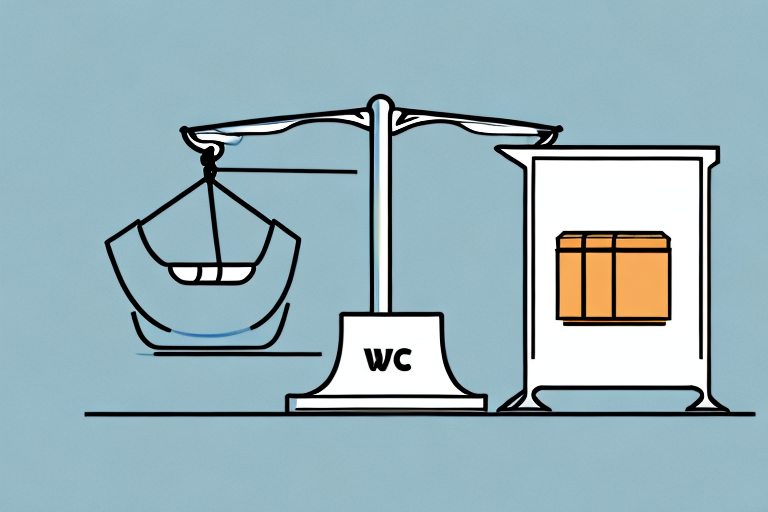Understanding UPS Shipping Rates Per Weight
If you're a business owner or online seller, the cost of shipping can significantly impact your bottom line. One of the primary factors that affect UPS shipping rates is the weight of your package. In this article, we'll explore in-depth how weight influences shipping rates and what strategies you can employ to save on shipping costs.
What Factors Affect UPS Shipping Rates?
Before delving into the specifics of package weight, it's essential to understand the various factors that influence UPS shipping rates:
- Package Weight and Dimensions: Heavier and larger packages generally cost more to ship.
- Destination Address: Shipping to distant or international locations can increase costs.
- Shipping Service Level: Options like Ground, Air, and International have varying rates and delivery times.
- Package Value: Higher-value items may require additional insurance, increasing shipping costs.
- Additional Services: Services such as insurance, signature confirmation, and special handling can add to the cost.
Understanding these factors is crucial for accurately estimating shipping expenses and optimizing your shipping strategy.
Impact of Package Weight on UPS Shipping Costs
Package weight is a critical determinant of UPS shipping rates. Generally, the heavier your package, the higher the shipping cost. This is because heavier packages consume more fuel and resources during transportation, driving up costs for the carrier.
According to UPS's Rate and Service Guide, rates are calculated based on both the actual weight and the dimensional weight of the package, whichever is greater. Understanding this can help you better estimate and potentially reduce your shipping costs.
Dimensional Weight vs. Actual Weight
UPS employs two methods to calculate shipping costs: dimensional weight and actual weight.
- Dimensional Weight: Calculated based on the package's dimensions (length × width × height divided by a divisor, typically 139 for domestic shipments). Used when it results in a higher value than the actual weight.
- Actual Weight: The weight of the package as measured on a scale.
For example, a large but lightweight package may incur higher shipping costs based on dimensional weight rather than actual weight. It's crucial to consider both weight and dimensions when preparing your shipments to avoid unexpected fees.
Not all shipping carriers use dimensional weight, so it's beneficial to understand each carrier's pricing model to choose the most cost-effective option for your needs.
Calculating Shipping Rates Based on Package Weight
Calculating UPS shipping rates based on package weight involves several steps:
- Determine the package's actual weight using a scale.
- Measure the package's dimensions to calculate dimensional weight.
- Use the UPS Shipping Calculator to input the weight, dimensions, destination, and selected service level.
- Compare the rates for different service levels and choose the most suitable option.
Additional factors like fuel surcharges, residential delivery fees, and insurance can further influence the final shipping cost. For accurate estimates, utilize UPS's official tools and consult their latest Rate and Service Guide.
How to Save Money on UPS Shipping Rates by Reducing Package Weight
Reducing the weight of your packages is one of the most effective ways to lower UPS shipping costs. Here are some strategies to consider:
- Choose Lightweight Packaging Materials: Opt for materials like poly mailers instead of boxes when appropriate.
- Use Compact Packaging: Smaller packages generally weigh less and may qualify for lower rates.
- Optimize Product Packaging: Ensure products are packaged efficiently without excess filler.
- Remove Unnecessary Materials: Eliminate extra padding or packaging that doesn't add value.
- Consolidate Shipments: Combine multiple items into a single shipment to reduce overall weight and costs.
Implementing these measures can lead to substantial savings, especially for businesses that ship frequently or in large volumes.
Understanding the Impact of Destination on UPS Shipping Rates
Shipping costs vary significantly based on the destination. Domestic shipments within the U.S. are generally less expensive than international shipments due to shorter transit distances and fewer logistical challenges.
The distance between the origin and destination also affects rates. For instance, shipping from New York to Los Angeles will cost more than shipping within the East Coast due to the longer distance.
Additionally, shipping to remote or rural areas may incur higher costs due to limited delivery infrastructure. It's advisable to use UPS's shipping calculator or consult their rate guides to estimate costs accurately based on specific destinations.
Tips for Negotiating Better UPS Shipping Rates Based on Package Weight
If you're a frequent shipper, you may be eligible for discounted rates with UPS. Here are some tips to negotiate better rates:
- Consolidate Shipments: Higher shipping volumes can lead to better discounts.
- Ship During Off-Peak Times: Avoid peak seasons where rates might be higher.
- Leverage Shipping History: Use your shipping volume and history as leverage during negotiations.
- Seek Long-Term Contracts: Committing to a long-term partnership can secure more favorable rates.
- Compare Competitors: Use rates from other carriers like FedEx or USPS as negotiation points.
Engaging with a UPS account representative to discuss your specific needs and shipping patterns can also open opportunities for customized rate plans and additional discounts.
Tracking Packages and Monitoring Shipping Costs Based on Weight
Effective tracking and monitoring are essential for managing shipping costs. UPS provides comprehensive tracking services that allow you to monitor the status of your packages in real-time.
Using the UPS Tracking tool, you can:
- Track the current location and status of your shipments.
- Receive notifications about delays or delivery confirmations.
- Analyze shipping patterns and costs through UPS's reporting tools.
Additionally, integrating UPS tracking with your e-commerce platform can streamline the process for both you and your customers, enhancing transparency and trust.
Common Mistakes to Avoid When Calculating UPS Shipping Rates Per Weight
Accurately calculating shipping rates is crucial to avoid unexpected costs. Here are common mistakes to avoid:
- Inaccurate Measurements: Always measure and weigh packages precisely to ensure correct rate calculations.
- Ignoring Dimensional Weight: Failing to consider dimensional weight can lead to higher charges.
- Choosing the Wrong Service Level: Selecting an inappropriate shipping service can result in unnecessary expenses.
- Overlooking Additional Fees: Be aware of extra costs like fuel surcharges, residential fees, and insurance.
- Not Comparing Carriers: Regularly compare rates with other carriers to ensure you're getting the best deal.
By avoiding these pitfalls and using UPS's resources effectively, you can optimize your shipping strategy and manage costs more efficiently.
Conclusion
Understanding how weight impacts UPS shipping rates is vital for managing your shipping expenses effectively. By implementing the strategies discussed in this article, you can reduce shipping costs, negotiate better rates, and optimize your overall shipping strategy for your business or online store.
Remember to consider factors such as package weight and dimensions, destination, and service levels when calculating shipping costs. Additionally, leveraging UPS's tools and resources can provide valuable insights and help you make informed decisions to enhance your shipping efficiency.
For businesses that ship frequently, exploring UPS's discount programs and negotiating personalized rates can lead to significant savings. Staying informed about the latest shipping trends and continuously assessing your shipping practices will ensure that you maintain a cost-effective and reliable shipping operation.
For more information and to access UPS's official shipping resources, visit the UPS Services page.








